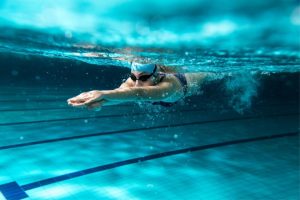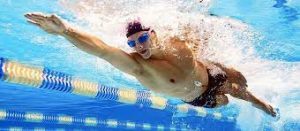Swimming competitions were held in the ancient world – in Ancient Egypt, Ancient Greece and other states – this is evidenced by many drawings on archaeological finds.
The first swimming competitions, about which there are documented data, were held at the turn of the 15th-16th centuries. (for example, in 1515 in Venice). From the middle of the 19th century, with the beginning of the construction of artificial pools, sports organizations of swimmers began to form in many countries of the world (1869 – in England, 1882 – in Sweden, 1886 – in Hungary and Germany, etc.: such an organization arose in Russia in 1894).
In 1896, swimming competitions were included in the program of the first Olympic Games, and in 1908, FINA developed the first official rules for swimming competitions (“FINA Rules”).
At present, swimming competitions in our country are regulated by the “Rules of Swimming Competitions” of the All-Russian Swimming Federation. These rules have been developed in full compliance with the “Rules of the International Swimming Federation” (FINA) for 2005-2009. and the Rules of the European Swimming League (LEN).

Swimming methods and distances
At swimming competitions, records of Russia, Europe and the world are registered in the following swimming methods and distances:
- freestyle – 50, 100, 200, 400, 800, 1500 m;
- on the back – 50, 100, 200 m;
- breaststroke – 50, 100, 200 m;
- butterfly – 50, 100, 200 m;
- integrated swimming – 100 (only in the pool 25 m), 200, 400 m;
- freestyle relay – 4×100, 4×200 m;
- combined relay – 4×100 m.
Pool length
Swimming competitionsAccording to the first rules for swimming competitions (adopted by FINA in 1908), world records could be recorded in any pools that were at least 25 yards long (for distances longer than 400 m – at least 50 yards). But at the same time, official international swimming competitions could only be held in pools 50 and 100 m long. As you know, in short pools (25 m), swimmers swim the same distance faster than in long ones, so most world records at that time was established not at all at the Olympic Games and not at the continental championships.
That is why in 1956 FINA decided that world records could only be set in 50 meter (55 yd) pools. The registration of all world records previously set in short course competitions has been restarted.
From the mid 1980s. winter and spring swimming competitions in 25-meter pools have become very popular. In 1988/89 FINA held the first Short Course World Cup, in 1993 the World Championship. Now the program of swimming competitions in “short water” includes a special distance (in addition to those in “long water”) – 100 m individual medley.

Swimming competition system
Swimming competitionsSince 2001, official swimming competitions have been held according to a system consisting of preliminary, semi-final and final heats. In the morning, preliminary heats are held, in the evening – final and semi-final.
At distances of 50, 100, and 200 meters, according to the results of the morning preliminary heats, 16 participants are selected, who (in the evening of the same day) participate in two semi-finals, where 8 participants in the final (which is held the next day) are determined.
At longer distances and in relay races in the morning preliminary heats, 8 participants in the final are immediately determined (for distances of 800 and 1500 meters, the final is held the next day, for the rest – in the evening of the same day).
If, according to the results of the preliminary (or semi-final) swims, the athletes show the same result, a re-swim is held, in the final swim, the participants who show the same result share the place.
Records
Swimming competitions In swimming competitions, records can be recorded in the heats of any stage of the competition, and, in addition, during the swim (for example, a record in swimming at 800 m freestyle can be recorded during the swim at 1500 m). In relay disciplines, a record in individual swimming can only be recorded at the first stage.
Swimming competitions are becoming more and more interesting these days. New distances are introduced (for example, 10 km), new, ultra-precise equipment is used to record results, television broadcasts of swimming competitions become more spectacular, which contributes to the popularization of swimming as a sport in general.
